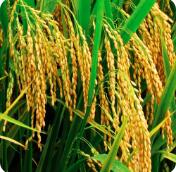CROP GENETICS & BREEDING·GERMPLASM RESOURCES·MOLECULAR GENETICS
QIUDongFeng, LIUGang, LIUChunPing, XIAKuaiFei, WANGTingBao, WUYan, HEYong, HUANGXianBo, ZHANGZaiJun, YOUAiQing, TIANZhiHong
【Objective】To meet the increasing food demand driven by population growth and environmental changes, it is necessary to continuously cultivate varieties with high yield, good quality, and multiple resistances. Efficiently create new germplasm with rich genetic backgrounds and genetic diversity to provide a reference for breeding new varieties that balance multiple excellent traits. 【Method】The Sanming dominant genic male sterile material was used to simplify the hybridization procedure. It was hybridized with multiple parents with distant geographical relationships to aggregate multiple excellent traits. Aiming at problems such as a narrow genetic basis and the difficulty of applying molecular markers, S221 was successively and continuously hybridized with materials such as 09598, Ezhong 5, Yuanfengzhan, Yunxiangruan, etc. Fertile plants were selected from the offspring of the last hybridization. The new variety was cultivated by combining the pedigree method with heat-tolerance analysis, rice quality analysis, and resistance screening. The DNA of 60 selected single plants from the F10 series of lines and 4 parents was extracted. Primers for the target sites were designed. The target DNA fragments were captured by PCR and sequenced. Finally, the genotyping analysis of the target sites was carried out. The SLYm1R high-density rice whole-genome SNP chip was used for the analysis of functional genes. 【Result】Genotype analysis is carried out to analyze the degree of genetic relationship or similarity based on the magnitude of the base substitution rate. The parental materials Ezhong 5 and Yunxiangruan have a relatively distant relationship with other parental materials, while 09598 has a relatively close relationship with Yuanfengzhan. The base substitution rates among the three newly obtained lines are as follows: 0.0099545 (170531-170532), 0.0338213 (170531-170533), and0.0371913 (170532-170533). Within each line, the base substitution rate is 0, indicating that there are differences among the three lines, but there is no genetic difference within each line. Through successive generations and expansion propagation, new germplasms were formed, which were named ZY531, ZY532, and ZY533 respectively. The results of functional gene analysis show that the functional genes of the ZY532 series of germplasms are respectively derived from 4 parents, aggregating excellent genes from multiple parents. For example, the Os-MOT1;1 gene is derived from Yunxiangruan, which can reduce abiotic stresses such as molybdenum accumulation; the Bph3 gene is derived from 09598 and Ezhong 5, which can enhance the resistance to brown planthoppers; the OsGSK2 gene is derived from 09598, Yuanfengzhan, and Yunxiangruan, which can increase the length of the mesocotyl and is suitable for direct seeding; the Badh2 gene is derived from Yunxiangruan, making the rice fragrant; multiple blast resistance genes are derived from different parents and can also be aggregated into the innovative resources, enabling it to obtain good blast resistance. ZY532 has excellent rice quality, good blast resistance, and strong heat resistance. ZY532 also has good heat resistance, and the heat resistance of the hybrid combination prepared reaches level 3. 【Conclusion】When using dominant genic male sterility to cultivate new varieties, due to the complex genetic background, the breeding cycle is often long. Combining high-throughput SNP marker detection can quickly screen out stable lines and more types, which not only broadens the genetic basis but also improves the breeding efficiency. It is an efficient breeding method.
